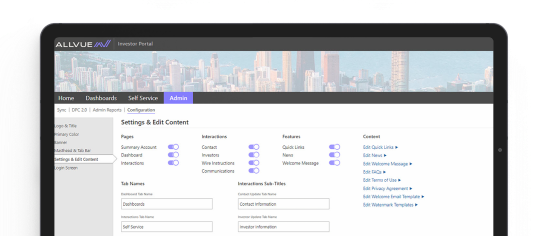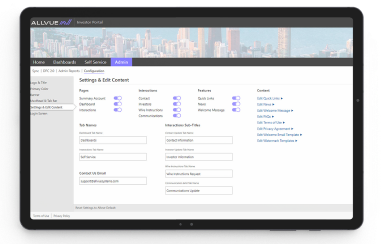
By: Ryan Burger
Senior Vice President - Product Strategy and Client Delivery
July 1, 2025
What are Carried Interest Forecasting Models?
Carried Interest plans, are profit-sharing mechanisms that are a distinct feature of the alternative investment industry. Private equity, venture capital, private debt, and real-estate firms all utilize carried interest deferred compensation agreements for founders, partners, advisors, and select employees. With the growth and maturity of the alternative investment industry, firms of all sizes are building carried interest forecasting models in an effort to provide transparency to employees on potential future earnings.
Carried Interest Forecasting Model Deep Dive
Carried interest plans are deferred incentives that are typically structured as a portion of future profits generated from performance or incentive fees charged to outside investors. As deferred incentives become a larger portion of total compensation, forecasting what these incentives might be worth in the future is important to recipients.
In this blog let’s delve deeper into carried interest forecasting models. We’ll start with a scenario looking at how a hypothetical firm would forecast carried interest to employee recipients.
Next, we’ll look at six different ways alternative investment firms structure their carried interest forecast models. Finally, we’ll look at how employees approach deferred compensation forecasts when employees build their own models and the uncertainty it can create.
A Carried Interest Forecast Model Scenario at a Hypothetical Fund
Consider a simple illustrative scenario. A firm sets a future 2X multiplier on a one billion fund. The fund assumes it will double its value returning an equal one billion in profit and one billion in return on capital. If the firm receives a twenty percent incentive fee, then it will receive approximately two-hundred million from outside investors (not considering factors such as an eight percent preferred return, GP catch-up, and other components of limited partnership agreements). Employees who have a ten percent carry allocation walk away with a five percent allocation of the total fund.
While the simplicity and clarity of our hypothetical fund’s returns would make forecasting easy, it doesn’t reflect the reality of any real fund’s performance or growth. The fund may outperform or underperform.
As a result, employees and partners with awards in a given fund often don’t know their actual compensation until it’s paid out when they finalize their distributions.
While all plan participants would like an accurate forecast of their future returns, creating an accurate carried interest forecasting models is difficult. Market conditions, institutional inertia, and firms using outdated carry agreement forecast models for increasingly longer durations all create accuracy challenges.
Six Carried Interest Forecasting Models
There are no shortage of ways firms can structure their carried interest forecasting models. Below are six different approaches to carried interest forecasting models:
1. Dollar Amount at Commencement of Fund
When new awards are issued, firms correlate a dollar amount to the percentage of awards. For example, the fund may estimate that the new fund will eventually return one-hundred million to the carry award holders. If an employee has a one percent carry allocation in this fund, they are told their award is valued at one million (assuming the fund returns what they expect). Some firms limit their forecasting to this one-time projection, which is usually based on an initial multiplier. For some firms that use this method, the only reporting is often an award letter with this projection.
2. Multiplier Method
This carried interest forecast model see firms apply a future multiplier to investments. The industry norm is often 2X, but some might use lower or higher multiples, and some firms will have base case and stretch case multipliers so that participants can see various scenarios. This method allows firms to predict future returns and distributions based on what’s been committed to the fund. This method is easier to calculate than some other models, but isn’t always an accurate gauge of results, especially for more mature funds where the firm has a better sense of performance.
3. Unrealized Gain or Loss
This method doesn’t provide a future value but instead provides the value as if the fund liquidated all its investments as of the reporting date, often GP carry participants’ portions of the unrealized waterfall multiplied by participants’ carry allocation portions. Firms will take the gross amount of unrealized carry on their spreadsheets, or systems such as FirmView will allocate pro-rata to the participants.
4. Combined Approach
Some firms use a combination of the Multiplier Method and Unrealized Gain or Loss method above to account for different valuation methods. For example, many will take unrealized gain/losses for investments that have been made, and apply a multiplier (e.g., 2X or another factor) for unfunded commitments. Together, this approach offers a picture of what an employee’s carry allocation is worth at any given point in time plus a future prediction. To take this method a step further, the firm can project future changes to the investments that have been made on top of the unrealized gain/loss.
5. Bottoms-Up Analysis
Some firms compute their expected future value of carry based on their knowledge of their investments, strategies, and exit plans. They will determine the gross amount that they expect to return and allocate this expected amount down to each participant.
6. Forecasted Cash Flow
This plan is often used for real estate investors or other sectors, such as credit, where revenue streams are better known. Allocation is tied to expected cash flows over regular intervals. Firms can therefore present year-by-year estimates to plan participants. Generally, this method allows investors to better predict the timing and size of distributions.
Whatever method fund managers use, participants are usually not aware of their exact earnings until a fund’s life is completed. Though the six methods above help provide some level of forecasting, there’s no way for them to predict future earnings with 100 percent accuracy. However, providing employees and other carried interest agreement participants a robust forecast based on a combination of the six methodologies certainly helps.
When Employees Create Carried Interest Forecasting Models
Conversely for firms that conduct minimal forecasting or forecasting only at the commencement of a fund, participants cannot gauge future earnings unless they keep their own forecasting models. These participant models will almost certainly not include all of the variables that employers have access to. This opaqueness can increase retention risks. If employees cannot reliably assign a value to future awards, their openness to new opportunities may increase.
Overall, transparent comp and carry plans help employees see the long-term potential of their awards along with various other components and complexities of their long-term incentive packages. As a technology firm that focuses on carried interest reporting and forecasting participants’ carried interest, we are seeing this transparency enhance our clients’ communications with employees on carry allocations, vested/not vested splits, and future compensation.
FirmView® Compensation and Carry Management for Alternative Investment
FirmView® is comprehensive carry and compensation software solution to manage allocations, joiners, leavers, vesting, forecasting and reporting with a dedicated employee portal. FirmView® Carry and Compensation also includes management of co-invest obligations, and full compensation including, salaries, bonuses, and retirement, to provide enhanced management and employee reporting.
Reach out to the Allvue team to learn how you can leave simple carried interest forecasting models behind.
More About The Author

Ryan Burger
Senior Vice President - Product Strategy and Client Delivery
Ryan is responsible for Product Strategy and Solution Delivery over FirmView at Allvue Systems (formerly PFA Solutions). Since joining PFA in 2018, Ryan has helped a diverse array of Finance and HR alternative investment leaders digitize and automate processes and reporting related to carried interest, employee co-investments, and compensation. Ryan has extensive experience and knowledge in alternative asset operations, consulting, and software implementation, enabling him to lead the successful delivery of solutions that meet the complex and evolving needs the alternative investment industry.


